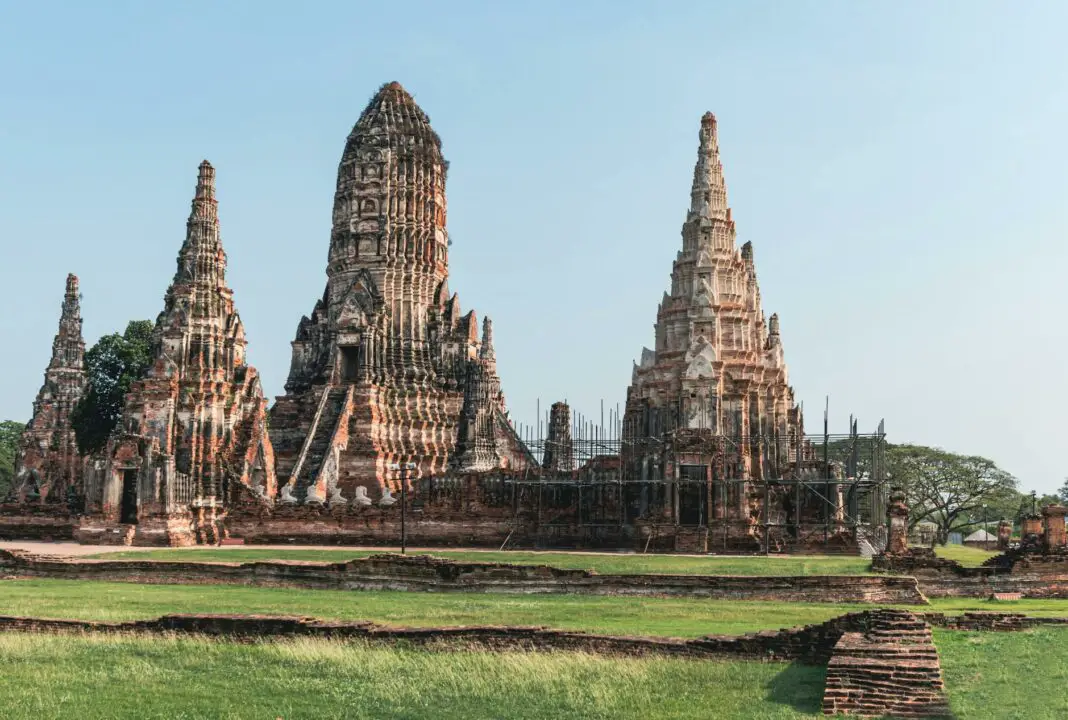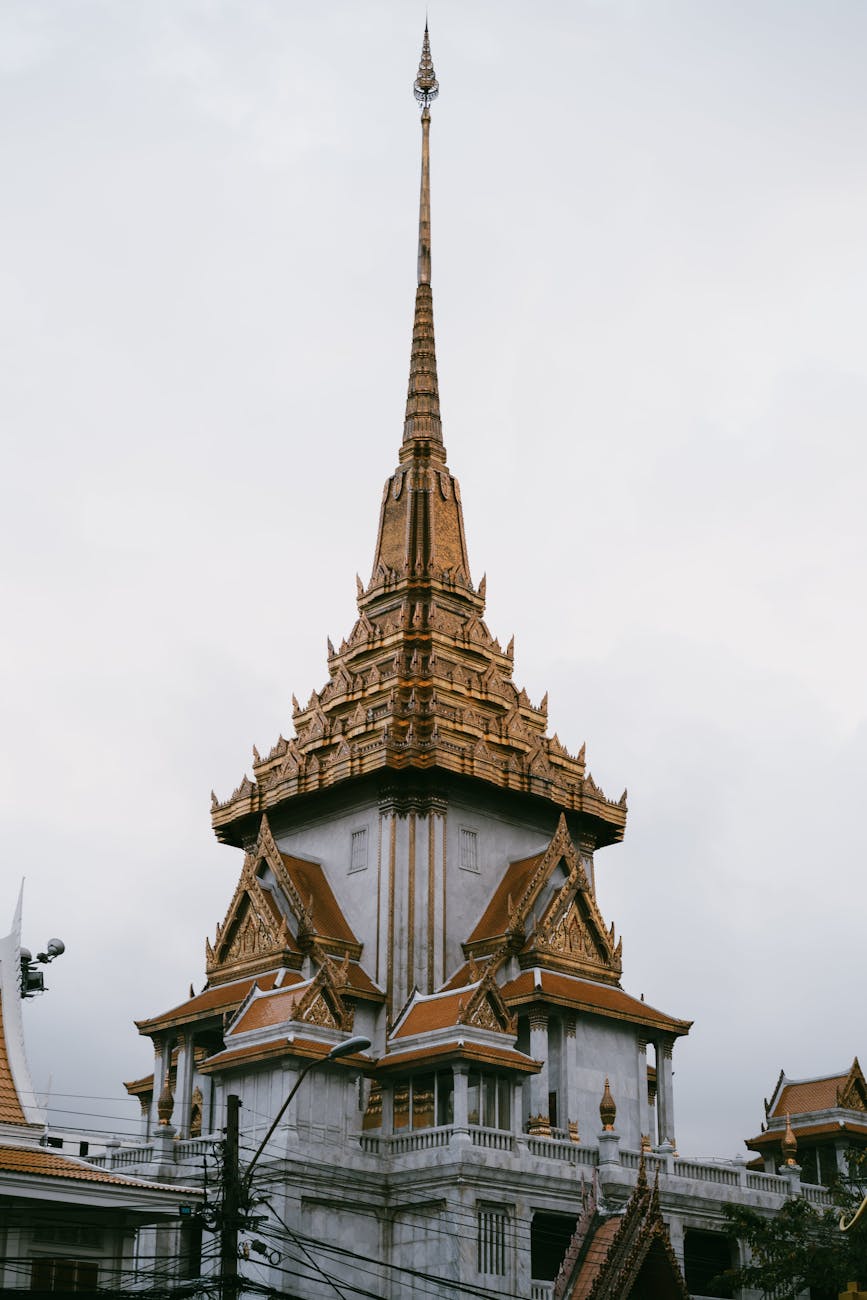Thailand, a country renowned for its vibrant culture and breathtaking landscapes, is also home to some of the most stunning architectural gems in the world. From ancient temples that echo centuries of spirituality to modern masterpieces that showcase Thailand’s innovative spirit, there is a wealth of sights to explore. This blog post delves into the essential architectural sites that you must visit on a trip to Thailand. Whether you are an architecture enthusiast or a curious traveler, this guide will inspire you to discover the rich history and beauty that Thailand’s architecture has to offer.
Get ready to embark on a journey through time as we explore magnificent structures that tell the stories of Thailand’s past and present. From intricate details to grand designs, each site has its unique charm and historical significance. Join us as we unveil the breathtaking architectural gems that await you in this Southeast Asian paradise.
Table of Contents
- Wat Phra Kaew – The Temple of the Emerald Buddha
- Wat Arun – The Temple of Dawn
- The Grand Palace – A Royal Residence
- Baiyoke Tower – The Skyscraper Experience
- Sanctuary of Truth – A Wooden Marvel
- Actionable Insights for Travelers
- Frequently Asked Questions
Wat Phra Kaew – The Temple of the Emerald Buddha
One of the most revered temples in Thailand, Wat Phra Kaew is known for housing the Emerald Buddha, a highly sacred relic of Buddhism. Situated within the grounds of the Grand Palace in Bangkok, this temple boasts an intricate design adorned with dazzling mosaics and ornate sculptures. The architecture reflects a blend of traditional Thai styles and influences from neighboring cultures, making it a must-visit for anyone interested in architectural beauty. Each corner of the temple tells a story; from the glimmering golden chedi to the beautifully painted murals, visitors can immerse themselves in the rich narratives of Thai history and religion.
The temple’s elaborate structure is not just about aesthetics; it also embodies spiritual significance. As you walk through the temple’s ornate gates, the sense of reverence fills the air. Don’t forget to look up at the stunning details of the roofs, which are adorned with mythical creatures and intricate motifs. Capturing the beauty of Wat Phra Kaew is a photographic wonderland, with every angle presenting a new masterpiece. Allow plenty of time to explore this sacred site thoroughly; the more you observe, the deeper your appreciation for its architecture and the stories it holds will grow.
Wat Arun – The Temple of Dawn
Wat Arun, or the Temple of Dawn, stands majestically on the banks of the Chao Phraya River, known for its striking central pagoda that is covered in colorful porcelain tiles. As one of the most photographed landmarks in Thailand, this temple showcases a unique architectural style known as Khmer, characterized by its towering structure. Many travelers are captivated by the breathtaking views, especially during sunrise when the temple reflects stunning hues in the water, creating a scene unlike any other.
A visit to Wat Arun takes you on an exploratory journey up to the central spire, offering panoramic views of the surrounding area. Each step on the steep stairway reveals intricate designs and mosaics that speak volumes of the craftsmanship involved in its construction. The temple’s serene atmosphere is enhanced by the sound of chants from monks and the gentle lapping of the river, which invites reflection and peace. The experience is truly transformative; the serenity and beauty of Wat Arun encourage visitors to embrace the cultural heritage that these walls embody.
The Grand Palace – A Royal Residence
The Grand Palace, a spectacular representation of Thailand’s architectural richness, served as the royal residence for generations of Thai kings. Upon entering its majestic gates, you will be engulfed by a sense of grandeur that is encapsulated in its remarkable design and intricate details. The mix of architectural styles reflects the evolution of Thai architecture over the years and exhibits brilliant artistry that showcases the nation’s heritage. Notably, the vibrant colors and detailed murals tell vivid tales from history, enchanting every visitor.
As the centerpiece of the compound, the Emerald Buddha Temple enhances the palace experience, making it a focal point of spirituality amidst royal elegance. Walking through the extensive grounds, each structure unfolds like a page in a historical book, from the opulent columns to the delicate carvings. The sheer scale and beauty of the Grand Palace are overwhelming; here, history clashes with stunning design, resulting in an unforgettable experience. Allocate enough time to absorb the atmosphere, as the palace is a living testament to the magnificence of Thailand’s royal history.
Baiyoke Tower – The Skyscraper Experience
Venturing into the modern architectural scene, Baiyoke Tower, one of Bangkok’s tallest buildings, offers a sharp contrast to the traditional temples. This skyscraper stands out with its unique cylindrical shape, boasting stunning 360-degree views of the bustling city below. The observation deck provides a thrilling experience as you overlook Bangkok’s sprawling urban landscape juxtaposed against traditional temples and serene parks. It’s a striking reminder of how Thailand harmoniously blends the old with the new, showcasing progressive design alongside historical richness.
Visiting Baiyoke Tower is about more than just a view; it also features a restaurant that rotates, giving diners a truly unique experience as they bask in the beauty of the city from high above. Enjoying a meal while overlooking the city lights brings a new level of enjoyment that few experiences can match. Whether visiting during the day or at night, the tower’s lights create a spectacle that is both exciting and awe-inspiring. This modern gem contributes a different perspective to Thailand’s architectural landscape, inviting visitors to embrace the dynamic spirit of the city.
Sanctuary of Truth – A Wooden Marvel
Perched on the shores of Pattaya, the Sanctuary of Truth is a testament to the incredible artistry and craftsmanship that Thai culture is famous for. This all-wooden structure, built entirely without the use of nails, is a colossal masterpiece celebrating traditional Buddhist and Hindu imagery. Every inch of the sanctuary is adorned with ornate carvings depicting various deities, mythological creatures, and profound philosophical themes, making it a mesmerizing site that both educates and inspires.
The design philosophy behind the Sanctuary of Truth reflects Buddhist beliefs and the cultural heritage of the community. Each sculpture and carving is made to symbolize human’s interconnectedness with the universe, instilling a sense of wonder and reflection within its visitors. Exploring the sanctuary feels like entering a living gallery, where artisans work tirelessly to preserve this breathtaking artistry. Engaging with the craftsmen, who share their dedication and techniques, allows you to appreciate the depth of commitment behind this architectural wonder.
Actionable Insights for Travelers
When planning your architectural journey through Thailand, it is essential to consider a few key insights that will enhance your experience. Firstly, don’t rush through the visits; take your time at each site to soak in the details, history, and cultural significance. Armed with a guidebook or a local guide, you can unlock deeper narratives about each structure that may go unnoticed otherwise. Secondly, plan your visits early in the day or late in the afternoon to avoid crowds and bask in the golden light that enriches your photographs.
Additionally, dress appropriately when visiting temples; modesty is key in these sacred spaces. Embrace the local culture by trying traditional Thai food nearby each architectural gem to create a holistic travel experience. Lastly, be mindful of how you capture and share your journey on social media. Practice respect for the cultural and historical significance of these sites, showcasing their beauty while encouraging others to appreciate Thailand’s heritage responsibly.
Answers to Questions
– What is the best time of year to visit Thailand for architectural sightseeing?
The ideal months are November to February when the weather is cooler and dry, allowing for comfortable exploration of outdoor sites.
– Are all temples in Thailand open to visitors?
Most temples welcome visitors, but it’s essential to respect local customs and check for any specific visiting hours or dress codes before your trip.
– Can you take photographs inside temples?
Generally, photography is allowed in many temples, but there are specific areas where it may be prohibited, so always observe signs and guidelines.
Visiting Thailand – Your Gateway to Architectural Gems
Travelling to Thailand is not just about leisure and relaxation; it is an opportunity to immerse yourself in a world filled with architectural marvels that resonate with history and culture. The unforgettable experiences waiting at each of these sites invite you to appreciate the artistry and heritage that has shaped Thailand into the vibrant nation it is today. As you marvel at the stunning contrasts between the traditional and the modern, let every visit invigorate your wanderlust and deepen your understanding of this beautiful country. Prepare your itinerary to explore these breathtaking architectural gems, and create memories that will last a lifetime.
Image Credit: Pexels





